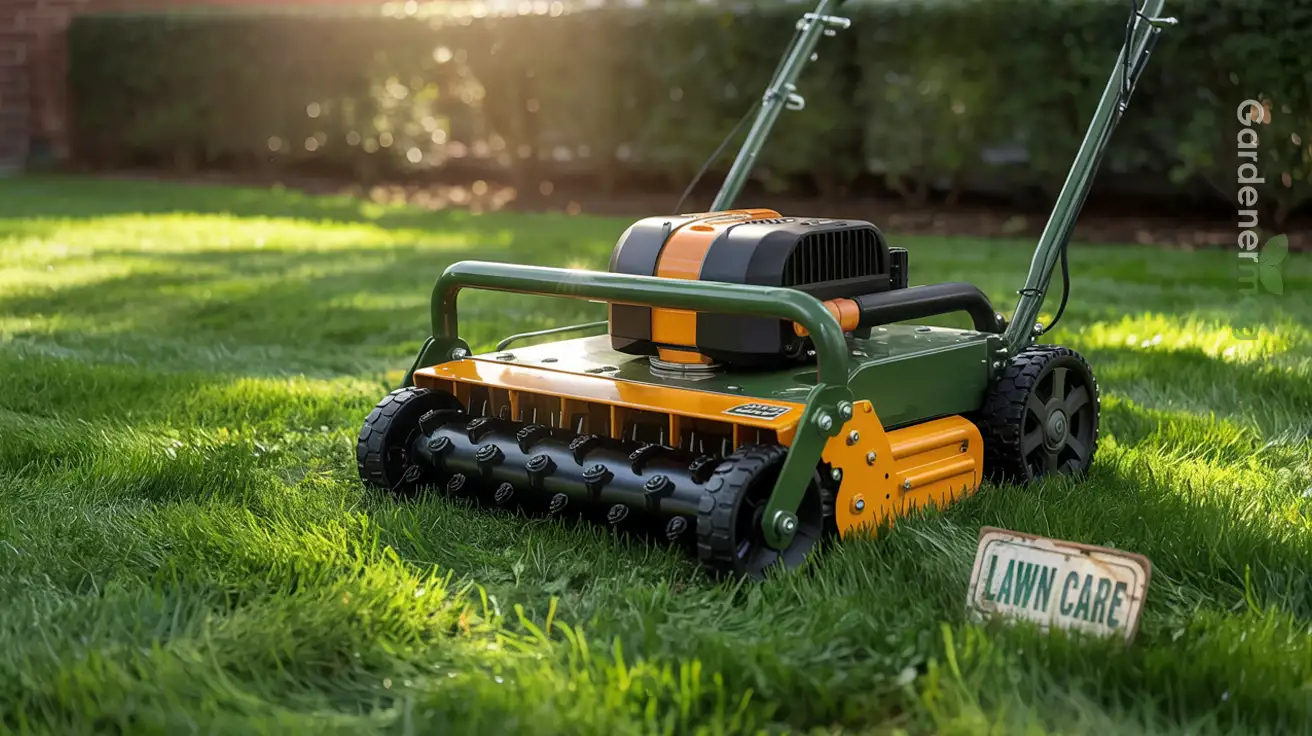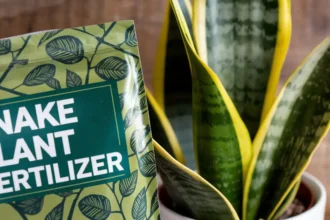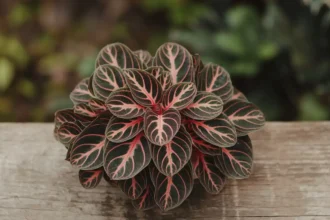Whether you’re a homeowner tackling a small yard, a golf course manager, or a professional landscaper handling extensive projects, there are lawn aeration tools designed to meet your needs. We reviewed the best lawn aerators on the market, putting them through their paces to bring you a list of the best aerators, both manual and powered.
Each model has a detailed list of pros and cons for clarity and has been rated according to ease of use, handling, performance, and value for money. Each aerator has scored a minimum of four out of five stars, so you can buy with confidence.
Brinly-Hardy 40″ Tow-Behind Plug Aerator
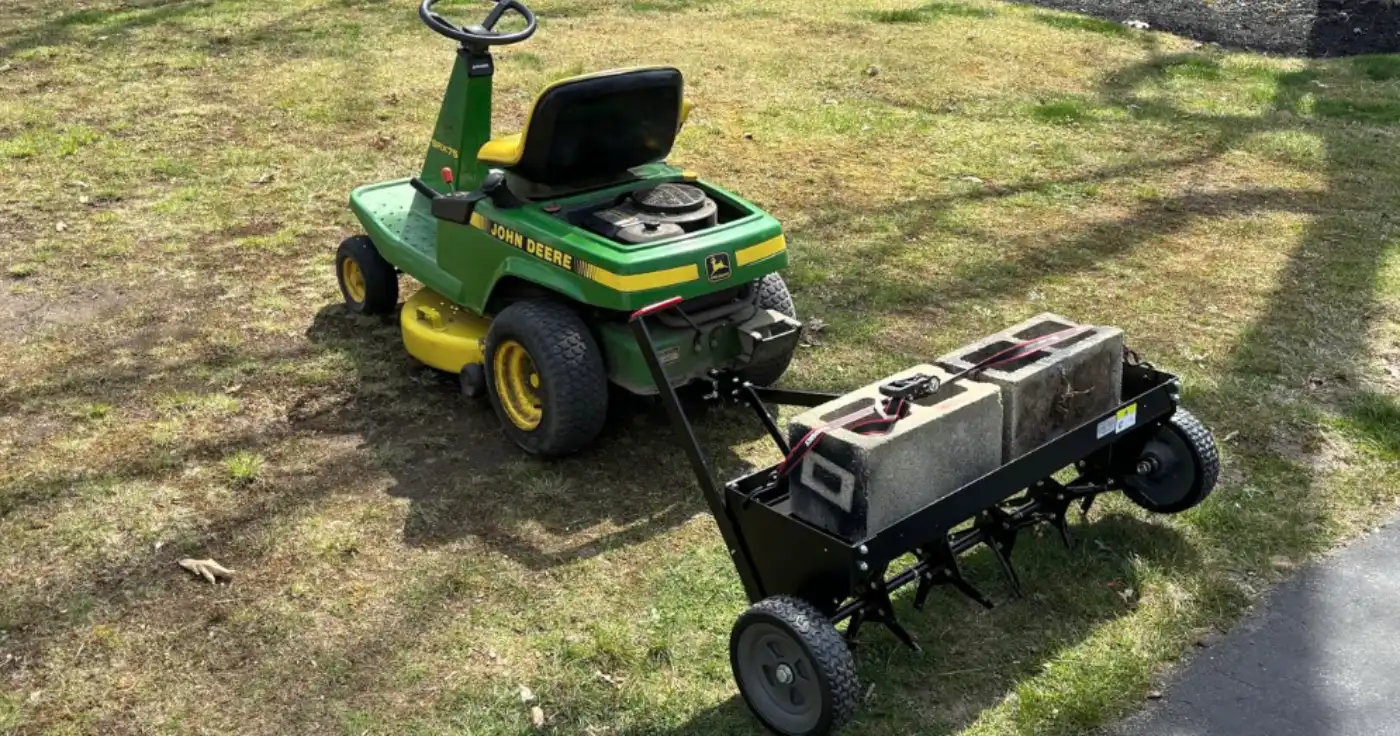
DIYers who take lawn care seriously will want to consider Brinly-Hardy’s 40-inch tow-behind plug aerator. It features 24 individual 3-inch heat-treated plugs, all-steel construction, and a weight tray that can handle up to 150 pounds.
All of these factors add up to a durable tool that provides optimal aeration.
This model comes equipped with a universal drop-pin towing hitch that can attach to ATVs, UTVs, and lawn tractors. The transport lever allows landscapers to disengage the plugs to pull the aerator across sidewalks and driveways. “No-flat” tires enhance the unit’s overall durability.
In our tests, the Brinly-Hardy lawn aerator proved to be a top contender for routine maintenance applications, but might not be best for severely compacted soil.
It was also the lowest-priced tow-behind plug aerator we tested. In average conditions with 120 pounds of weight added, it penetrated to an average of 2.75 inches deep.
The steel coring spikes are strong but not sharpened, and they are rolled to a “C” shape instead of a complete circular plug shape, which helps with clean out but might hinder penetration somewhat.
Because this aerator punches only 2.5 plugs per square foot, we had to make two or three passes with it for the best results.
Corona YardBreather Aerator With ComfortGel Grip
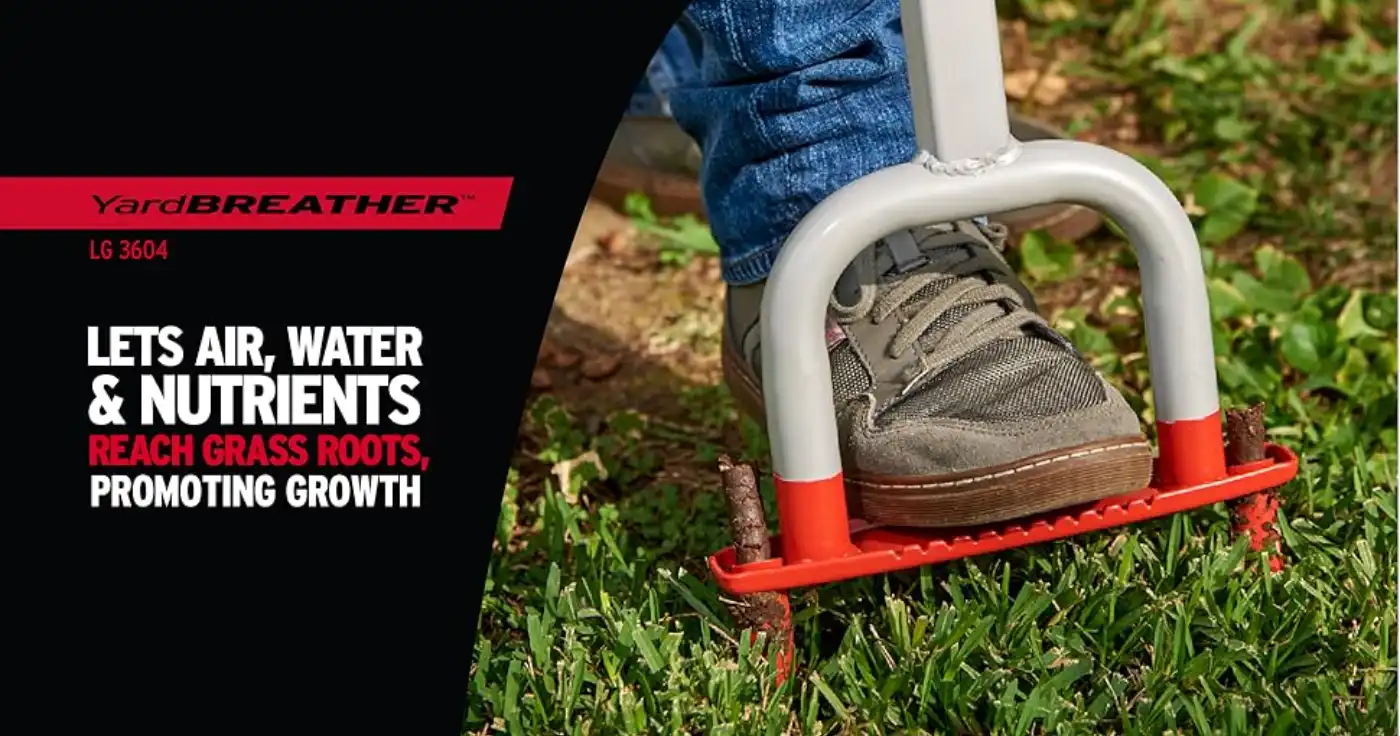
Those with only a small patch of yard to aerate might want to consider an inexpensive, easy-to-store handheld aerator like the Corona YardBreather. The YardBreather measures 40 inches high, with plugging spikes spaced 8 inches apart, and it weighs a little more than 3.5 pounds.
This rugged tool removes two 3.5-inch soil plugs at a time with a simple stepping motion. The tool ejects soil plugs from the top of the hollow spikes with each step.
The footplate and plugging spikes are made of heat-treated steel for a long working life. Thick padded handles and a wide nonslip footplate eliminate stress points and reduce user fatigue.
With a little practice, we were able to remove an average of 100 plugs per minute with the YardBreather.
It worked more effectively in heavily compacted and dry soils than any of the tow-behind aerators we tested because the user’s entire weight bears down on just two spikes instead of six or eight spikes at a time.
In average soil conditions, the spikes consistently penetrated to the full depth of 3.5 inches.
Although it is not an ideal solution for even the smallest whole-yard treatment, this tool would make an excellent purchase for those who regularly deal with pet paths around the property border or a worn pathway from the house to the toolshed.
John Deere 48″ Tow-Behind Plug Aerator
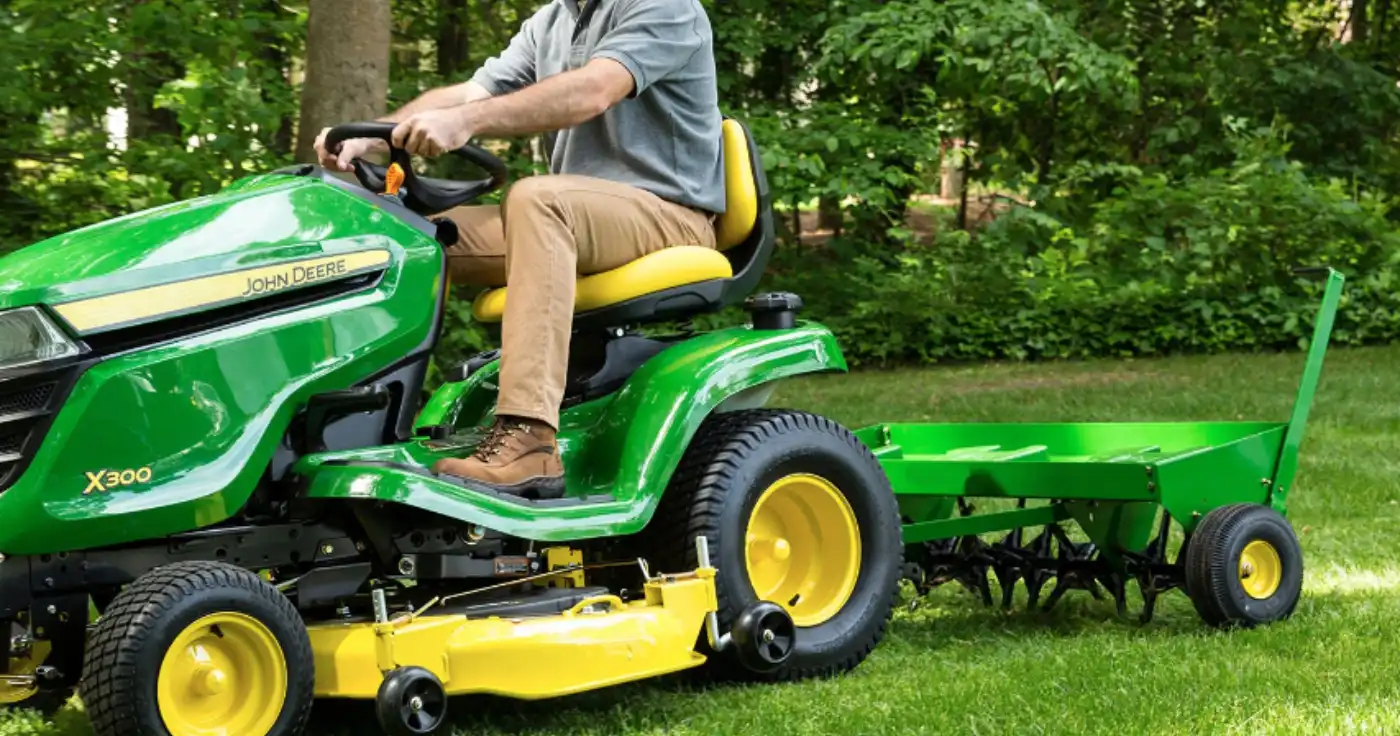
John Deere’s 48-inch aerator makes quick work of aerating the lawn. It boasts 12 four-way plug assemblies on the spool for a total of 48 spikes pulling 4.24 plugs per square foot. The heavy-duty body weighs in at 101 pounds and holds up to 250 pounds of additional weight for a total of about 350 pounds of downward pressure.
The heat-treated plugging spoons penetrate up to 3 inches. The universal drop-pin towing hitch is compatible with most lawn mowers. Unlike the other towable aerators in our lineup, this one rolls gently on pneumatic tires while in transport mode.
With 120 pounds of added weight, this aerator penetrated the soil an average of 2.5 inches. It continued to penetrate well even while making 180-degree end turns.
We especially liked that this model rides on inflated tires that distribute the weight better on soft ground instead of causing ruts as hard wheels do. If we could have operated the transport lever from the driver’s seat, this would have been a nearly perfect implement.
This aerator’s size and heavy-duty build make it an ideal choice for larger properties with lots of open lawn space.
Yard Butler Manual Lawn Coring Aerator
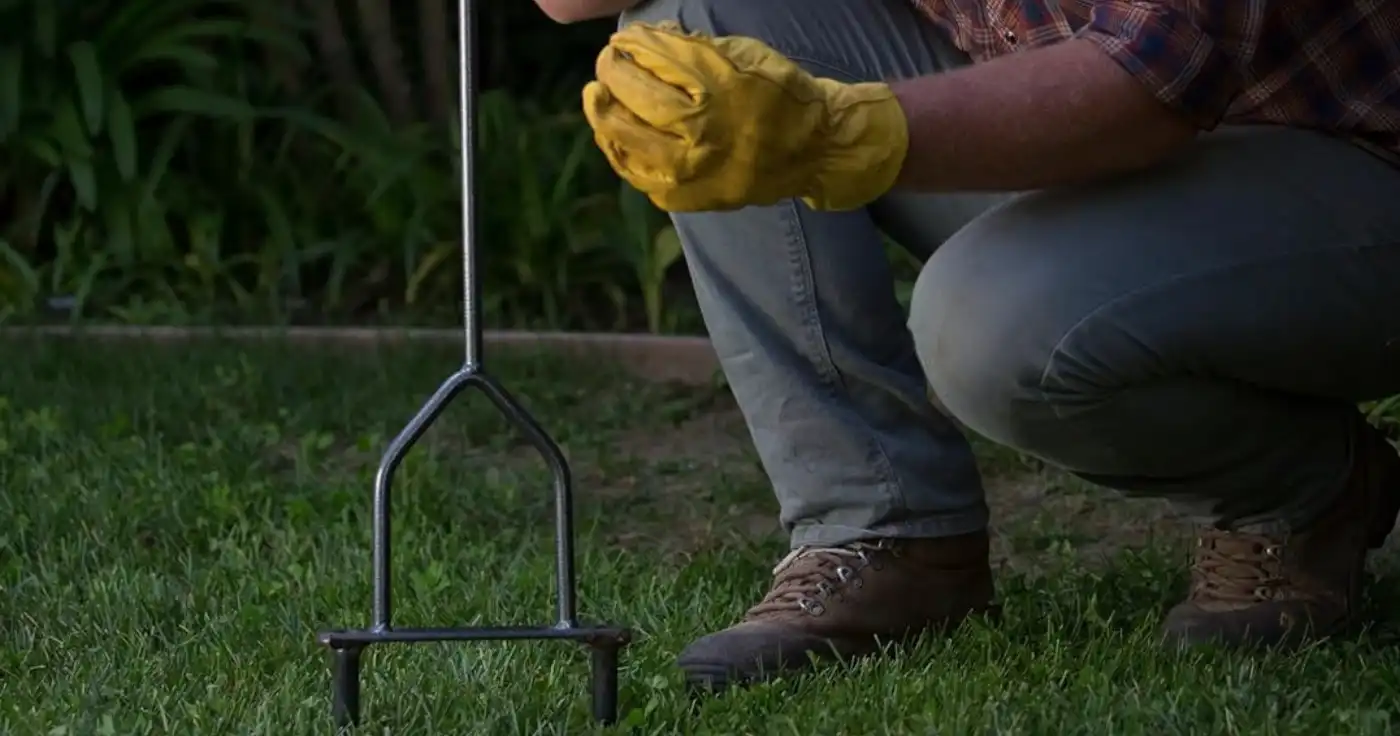
DIY lawn care experts know the value of a quality manual aerator. Whether it’s for a small yard or tight grass pathways, the Yard Butler manual lawn coring aerator is up to the task.
With a durable all-steel one-piece construction, it’s strong enough to sink the 3.5-inch tines into tough, compacted soil while the wide footplate provides plenty of leverage.
The Yard Butler measures 37 inches high, so users can maintain a comfortable posture while they work. At just over 3.5 pounds, it’s also easy to lift with the padded T-shaped handles.
While both are capable tools with nearly identical designs that easily remove two 3.5-inch soil plugs at a time, Yard Butler surpassed the Corona YardBreather in a couple of key testing metrics.
Their weights are nearly identical, at just over 3.5 pounds, but the Yard Butler is more compact: It is 0.25 inch thinner, 3.5 inches shorter, and the spikes are spaced 0.5 inch closer together.
The shorter height made the Yard Butler easier to pull out of the soil when we were working with it, while the narrow spike aerator spacing increased overall plug density for more thorough aeration.
Interestingly, even with the 0.5-inch reduction in spike spacing, Yard Butler’s footplate is just 0.25 inches narrower than the competition (4.75 inches vs. 5 inches), so those of us with big feet could still use it.
Although the competition offered a more comfortable handle and nonslip footplate, we preferred the sleek dimensions of the Yard Butler for both working comfort and storage.
Agri-Fab 48″ Tow-Behind Plug Aerator
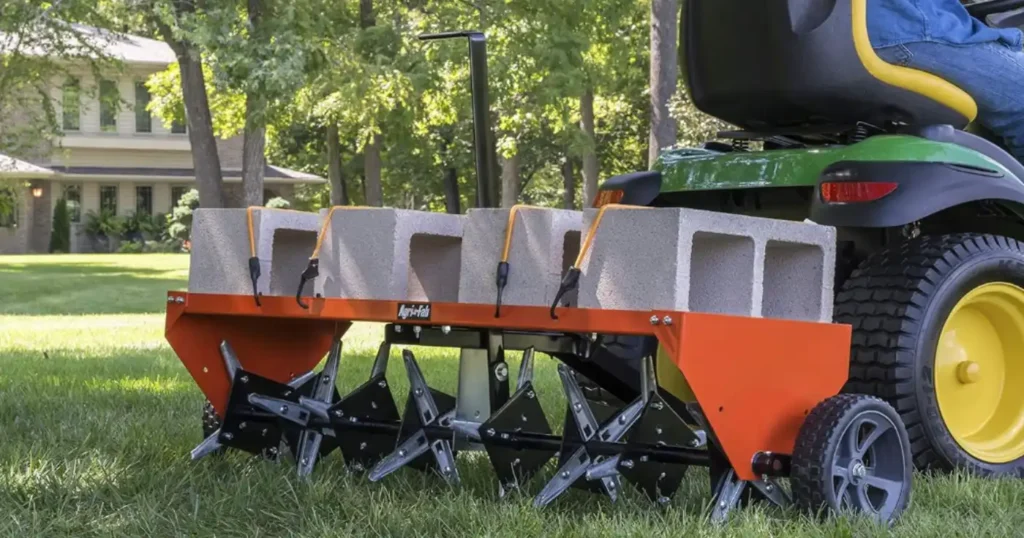
For large yards or those with extremely compacted soil, a heavy-duty aerator like this model from Agri-Fab might be the best bet.
The 48-inch-wide path on this tow-behind plug aerator makes quicker work of expansive lawns. Heavy-gauge galvanized steel knives with 32 spikes get the job done.
A 175-pound weight tray pulls enough weight for some of the most stubborn soil. A pair of 9.75-inch flat-free tires supports travel over rough terrain, and a transportation lever lifts the knives clear of sidewalks and driveways. The universal hitch fits ATVs, UTVs, and lawn tractors as well.
In our tests, the Agri-Fab 48-inch tow-behind plug aerator delivered stronger, more efficient penetration than the smaller Brinly-Hardy model, thanks to its heavier build and relatively low density of sharpened plugging spikes.
Fewer spikes meant that each one bore more downward pressure, and the heavier frame produced more pressure than the lighter model. The spikes penetrated to an average depth of about 2.5 inches.
However, punching only 2.67 plugs per square foot, we had to make two passes for thorough results. Like the other tow-behind aerators we tested, the rolled steel spikes were “C” shaped, not completely round, which meant that most soil plugs were not fully extracted from the ground.
But cleanup was easy since very few plugs stuck inside the coring spikes. The Agri-Fab lawn aerator makes an affordable choice for maintaining larger properties.
Ryan Lawnaire IV Walk-Behind Aerator

When professional groundskeepers and landscapers perform lawn aeration services, Ryan aerators are commonly the machines of choice.
The self-propelled Lawnaire IV walk-behind aerator covers a 19-inch-wide path with 5.63 coring spikes per square foot. A single pass with this machine is equivalent to two or more passes with most tow-behind units.
Traveling at speeds of up to 4 miles per hour, it aerates up to 0.67 acres (29,000 square feet) per hour. With two removable 25-pound weight cylinders and a fillable water drum, this aerator provides a maximum of 304 pounds of downward pressure to penetrate up to 3.5 inches despite the 2.75-inch spike length.
In our tests, the Ryan Lawnaire IV easily outperformed the rest of our lineup in terms of pure results, with the possible exception of the John Deere on flat straightaways. John Deere covered ground faster, but Lawnaire IV penetrated deeper with greater spike density.
The Honda engine started with a single pull. The controls were well placed and easy to operate. The machine moved quickly, aerated thoroughly, and was surprisingly easy to maneuver around curves and across moderate slopes.
We were easily able to maneuver the machine along a narrow grass corridor between two landscape beds where the lawn tractor could not drive, and this self-propelled machine had no difficulty moving up one short but particularly steep slope where the lawn tractor bogged down pulling the heavily weighted tow-behind models.
The coring spikes consistently penetrated 2.75 inches into the soil with only the cylinder weights installed.
Although most homeowners won’t spend this much to buy a professional-grade machine, renting one could be a great option. It is amazingly effective at fast, thorough aeration and may be one of the best tools to prepare a lawn for overseeding.
Covington Naturals Liquid Lawn Aerator
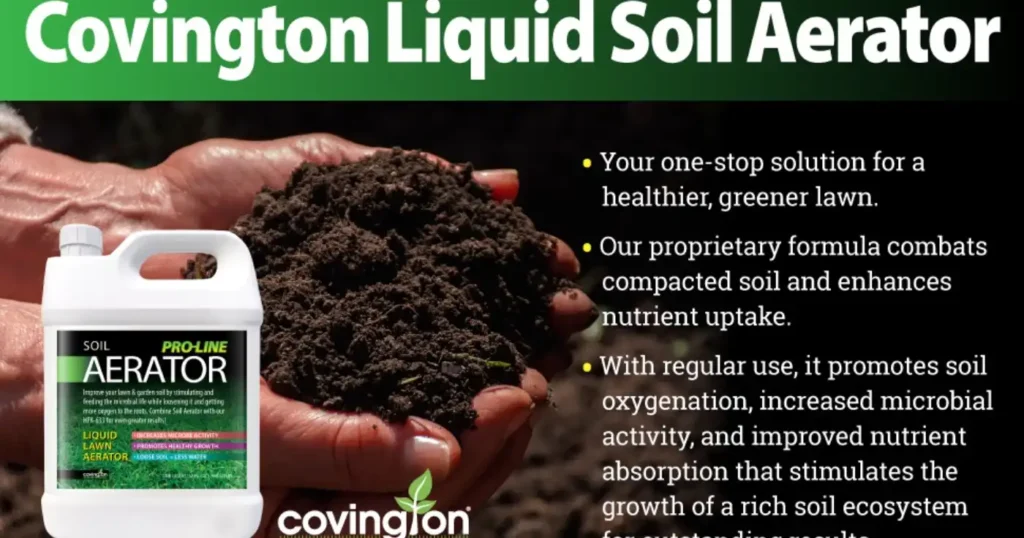
Before we dive into this one, it is important to note that we could find no scientific data on the efficacy of liquid lawn aerators.
Internet search volume indicates increasing consumer interest in these products, so we decided to test the Covington Naturals liquid aerator because of its strong customer reviews and our own curiosity.
The concentrated product contains low levels of manganese, sulfur, iron, and amino acid complexes to support plant growth along with microorganisms (20 percent), molasses (10 percent), humate (10 percent), and kelp (5 percent).
Users are instructed to apply 2, 4, or 8 ounces of the product, depending on the severity of soil compaction, for every 1,000 square feet of lawn every 45 to 60 days.
The company recommends deep watering every 3 to 4 days following application. Presumably, the microorganisms (the “active ingredient”) include soil-building bacteria, but the label provides no further details.
We applied a Covington liquid aerator on a 500-square-foot compacted pathway area as directed for moderate compaction. We also left an adjacent area untreated and watered both areas according to the prescribed follow-up schedule.
After a 30-day testing period, our results were inconclusive. The area looked great, but then it didn’t look horrible before. It was difficult to parse the effects of the plant food versus any actual improvement in soil compaction, which would likely require significantly more time to develop anyway.
We found no noticeable difference in the physical appearance of either area beyond the lush green grass, which we would have anticipated from the added water. The good news is that it didn’t harm the lawn, and we did see improvement in grass health.
Things To Consider When Choosing The Best Lawn Aerators
There are several different factors involved when considering getting a lawn aerator unique to your garden and circumstances.
Power
The motor of an automatic aerator is either petrol or electrical, a more powerful engine means a more effective and easier aeration process.
Gas powered lawn aerators are measured in cc’s or horsepower, higher numbers indicate a more powerful motor however the unit will be heavier as a result.
An electric powered motor on an aerator is measured in amps or watts, when comparing lawn aerators higher amps or watts signifies a more powerful motor. Smaller cheaper electric models might not be as robust, placing themselves under stress in harder soil due to lack of power.
Blade width
The blade is the part of the aerator which the spikes are mounted on. Smaller blade widths are ideal for softer and smaller turf, whereas larger blades are more suited for hard soil and will cover larger areas faster.
Build quality
Plastic can potentially last longer because it does not rust, but a metal body is stronger and heavier which adds to the overall weight. Additional weight is an advantage with any aerator but might be cumbersome and harder to use if manually pushing around a lawn.
Propulsion
Choose between manual mechanical, powered automatic or tractor pulled lawn aerators. The size of lawn, frequency of use, amount of time and effort you wish to spend will dictate which type of aerator to use.
Spike depth
The spike height on automatic or tractor pulled aerators can quickly and accurately be adjust to the desired depth, however manual aerators are typically limited by how much pressure is exerted.
Spike material
Due to the lightweight nature of plastic spikes these are ideal for manual aerators but might be more prone to breaking compared to metal spikes.
Storage
Unless you are treating multiple lawns an aerator will be sitting in storage for most of the year, ensure that you have adequate storage and look for space saving options such as collapsible handles.
Dethatching
Dethatching aerators might include a collection bag to speed up the removal of waste.
Comfort
An ergonomic form factor ensures comfortable use for extended periods of time, especially with manual aerators.
Frequently Asked Questions
Aerating your lawn helps improve soil drainage, loosens the soil, and lets air, water, and nutrients get to the roots more easily. This step helps grass grow stronger and keeps problems like thin or patchy spots away.
Most lawns do well with aeration once a year, usually during the growing season. For cool-season grasses, early spring or fall works best, while warm-season grasses grow better with aeration in late spring or early summer.
For smaller yards, using a manual aerator, like a spike or plug aerator, is usually enough. These tools are small, cheap, and simple to use in tiny spaces. But if you like things to be easier, a small electric tool could also do the job.


